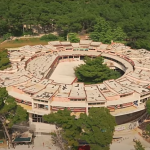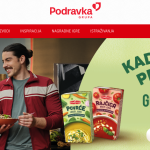As Novac/Gradonacelnik.hr writes on the 30th of July, 2019, the number of children born since 2009 on Croatian territory has been declining, and in those ten years, about seven and a half thousand babies less were born. The fewest births in that 10-year period occurred in 2017, when 36,556 babies were born, while last year that figure was ”fixed” by a further 389 newborns.
36,945 babies were born last year, or 1.1 percent more than in 2017, and 52,706 people died last year, down 1.4 percent from one year before.
Considering the fact that the number of deaths on Croatian territory continuously exceeds the number of births, the natural increase remains negative. In the last ten years, 2017 and 2015 were the worst when judging by that indicator. Last year’s natural increase rate was -3.9, meaning that 15,761 more people died than were born.
A positive natural increase was recorded in 58 Croatian cities and municipalities, 492 cities and municipalities had a negative result, including the City of Zagreb, and five of them had zero natural increase. Novac performed an analysis, city by city. Last year, there were more births than deaths in twelve Croatian cities, and more deaths than births in nine. Like last year, Solin, Metković, Kaštela and Dugo Selo had the most positive growth.
Last year, 278 babies were born in Solin, with a natural increase of 79 more births than deaths. The second largest city with the highest natural increase is in Split-Dalmatia County, in the coastal town of Kaštela, where 404 babies were born and 354 people died.
Metković followed with a natural increase of 47 new babies, Dugo Selo then followed with 37 new babies, Poreč with 27 new babies, Čakovec with 20, Sinj with 15, Novigrad Istarski with 5, and Orahovica and Vodnjan with four newborns. Vrgorac and Biograd na Moru had a positive increase with three, and two inhabitants. All other Croatian cities had a negative growth rate, ie, in one year, more people died than were born. From two counties, Istria and Split-Dalmatia, there are three cities with a positive natural increase.
All Croatian cities with a positive population growth are classified as medium and small cities, and they have a series of measures to retain their population and bring in new people in common. Newborn baby benefits are being raised, kindergartens are being built, housing incentives are being introduced, and entrepreneurship is being encouraged to create new jobs.
For several years now, Solin has been a record holder in Croatia in terms of natural population increase. This is certainly due to a number of measures introduced solely for children and young people.
“Solin is building two new kindergartens, with an investment value of 30,000,000 kuna. For the work of the Cvrčak (Cricket) kindergarten, which is majority owned by the City of Solin, 28,582,000 kuna will be allocated for 2019. In 2019, 2,404,000 kuna was earmarked for co-financing the work of private kindergartens (five kindergartens and one child care company). A total of 30,986,000 kuna has been planned for financing pre-school education in 2019, which is almost one third of the original budget,” Solin’s mayor Dalibor Ninčević told Novac.
He noted that Soline is also implementing various projects to help both children and their parents. Particularly noteworthy are the financial assistance measures for families with four or more children, which 95 families used in 2018, and financial support during maternity leave, which entails an additional monthly support of 700 kuna.
After Kaštela, where 15 more babies were born in 2018 than there were in 2017, and the natural increase stands at 50 inhabitants more, the next in line for positive population increase comes Metković, where 164 children were born last year, and the natural increase was 47 more live births than deaths.
Last year, the City of Metković secured the provision of textbooks for all students from the second to fourth grades who attend Metković’s elementary schools, since Dubrovnik-Neretva County provided everything for those in the first grade.
“Last year, the price of kindergartens was reduced by 150 kuna, or 100 kuna, depending on the length of stay of the children. The financial allocation for newborn babies has also been increased: for the first child, it has risen from 1000 to 2500 kuna, for the second, it has risen from 1200 to 3500 kuna, for the third child, it has risen from 1400 to 4500, and for the fourth and every child after the fourth, the financial benefit has increased from 2000 to 5500 kuna.
Make sure to follow our dedicated lifestyle page for much more on Croatian demographics.







